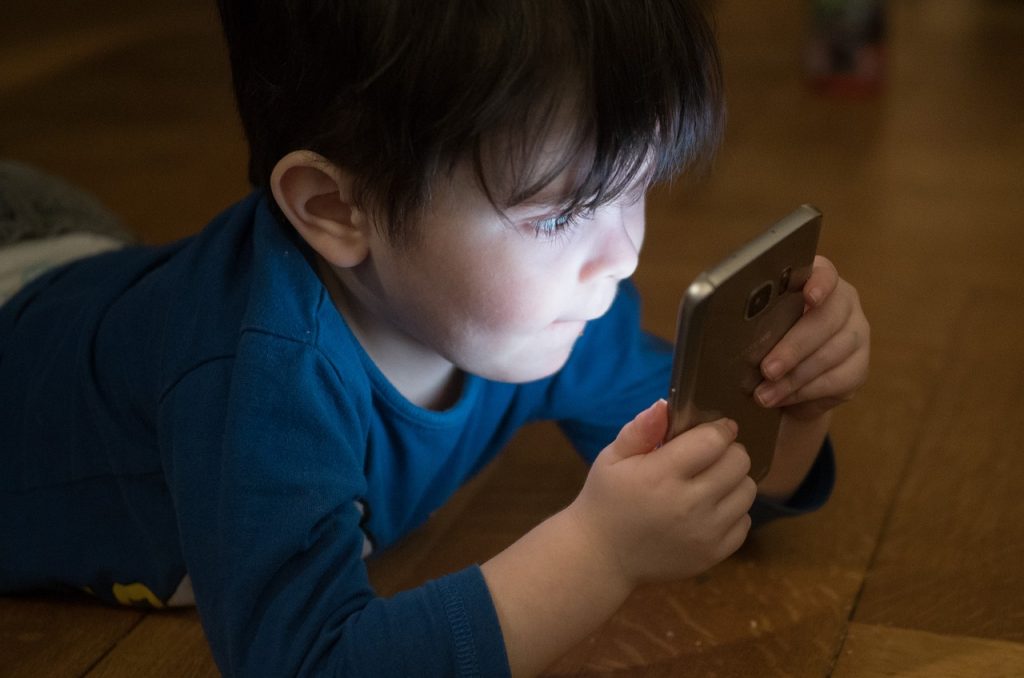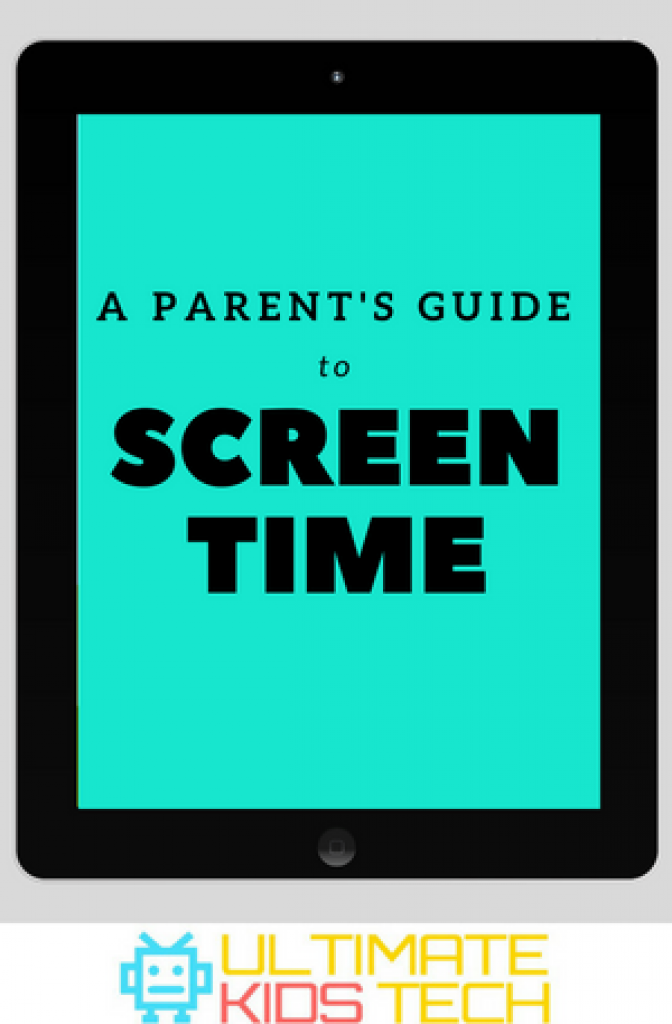Most of us spend large parts of our day on screens, whether it be for work or play. Our children are now surrounded by more screens than ever before. So, how much time should they be spending on screens? Can too much screen time be harmful? Well, in this guide, these are some of the questions we will answer.
Types of Screen Time
- Passive Screen Time
Types of activities that we consider passive are watching TV at a distance, reading, and listening to music. - Interactive Screen Time
This is active involvement in the screen such as playing games, using social media, and watching videos on personal devices.
In this guide, we will mainly focus on interactive screen time as it is what most parents have questions or concerns about.
How much screen time is too much?
The answer will depend on the age of your child. We’ve used the recommendations by the American Academy of Pediatrics (AAP) and summarized them in the chart below. We go into further detail beneath the chart.
Screen Time Recommendation Chart
| Under 18 months old | 18-24 months old | 2-5 years old | 6 years and older |
| Short intervals. | Short intervals. | 1 hour per day. | 2 hours per day. |
| Limited to video chatting. | Only exposed to high quality media. | Only exposed to high quality media. | Various types of media. |
Chart Summary
As the chart depicts, it’s not recommended for infants and very young children to have too much screen time at all. Any screen time they do have should be high quality and appropriate for their age. AAP recommends that you watch along with your child. This will ensure the screen is not too close to their face. It will also give you an understanding of what your child is engaged in.
As children get older, the recommended screen time doesn’t increase by much. AAP states that screen time use shouldn’t interrupt sleep, exercise, and a healthy lifestyle. We’ll take a look at the risks of too much screen time next.

Can too much screen time be harmful?
Yes, there are several harmful effects to a child if they have too much screen time. These effects can be both physical and mental. Remember, children are still growing and their brains are still developing.
Neglected Exercise
Too much in front of screens means less physical activity. Lack of exercise impacts them physically but can have an impact on their brains too. Exercise stimulates the brain as well as the body. Behavioral problems can also be linked to lack of exercise and too much screen time.
Development Risk
Research has found that toddlers who play excessively with devices have a higher risk of negative effects to their cognitive development. In a child early years, they need to learn how to develop motor skills and visual and spatial skills. These skills are best learned and developed through playtime, not by endless hours on apps or games.
Eye Strain
Children commonly experience eye strain from staring at a screen for too long. Some of the symptoms of eye strain are blurry vision, sore eyes, trouble focusing, and in severe cases even double vision. It’s important that a child’s eyes rest frequently and ideally before they are strained.
Poor Sleep
Too much screen time can cut into a child’s sleep. Using devices before bed is not recommended, it can often cause delays at bedtime. Leaving a device in your child’ reach is also not recommended. They could wake in the night and use it and the light a device admits has been linked to disturbed sleep.
Language and Speech
If a child spends too much time in front of a TV and other screens, their social skills can be impaired. Development of their language and speech happens when they engaging with people. A silent child can certainly not be golden!
Safe Screen Time Tips
As you can see, limiting screen time can have huge benefits. Here are a few tips on how to implement safe screen time for your child.
Set limits – and stick to them.
Sit down with your children and agree on limits and rules. Decide on the consequences of breaking them. Involving them in the process will give them a clear understanding of why. It will also have a higher chance of them sticking to the limits you set. In order for this to work, it’s important to stick to the limits you’ve set. If your child breaks a rule, they’ll soon learn that you mean business.
Parental Control Settings
Most devices have parental control settings. Some of these controls will allow you to set s limit to screen time. Apple users, set up controls on your Mac OS X and Apple devices (iPhone, iPad, iPod Touch). For Windows PC users, set up a Microsoft account and add family members. If your child has access to an Android tablet, we have some great ideas about how to set it up for a child.
Screen-Free Time
Schedule family time where no screens are allowed to be used (this is good for everyone, not just the kids). Get the board games out, play cards, enjoy the outdoors or cook a meal together. Doing this on a regular basis will get your children (and you) into the habit of having fun without devices. Another idea is to have screen-free zones (I particularly like this for the dinner table). Making the last hour before bed screen-free will ensure everyone gets to bed on time and better sleep. No devices in their bedrooms overnight is recommended.
Set an Example
Practice what you preach and limit your own screen time, particularly when with your children. They are more likely to follow suit (and those rules you set) if you’re not distracted by your phone. This may be hard at first, make it easier by turning off the notifications on apps that aren’t crucial.
Conclusion
Although devices can have great benefits, it’s important to limit children’s use of them (especially in babies and toddlers). With the proper guidance, children can use screens in a safe and healthy manner. Set those rules, implement healthy habits and they will be better off for it.






